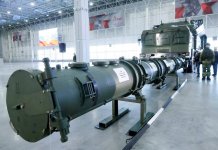The conditions on the moon are too harsh to be safe for humans, so the new moon base should be designed after the International Space Station, but built on the ground, a lead space systems engineer at Russian state space corporation Roscosmos said on Tuesday.
“In order to resolve all these issues [ensure safe working conditions for the crew], we will have to practically build an ISS that will lie on the regolith in the chosen zone, depending on what we want to research,” Viktor Khartov, the deputy chief of the Central Research Institute for Machine Building at Roscosmos, stated during the annual Korolev Academic Space Conference at the Bauman University in Moscow.

According to the scientist, the moon base would require a robotic landing site, a living module and a cargo lander with materials and equipment. A new generation heavy rover should also be designed to allow astronauts to move cargo around the moon.
A powerful energy source would be crucial for operating a cargo vehicle and for surviving the lunar night, which lasts for 14 days and is accompanied by a drop in temperature to -170 degrees Celsius (-274 degrees Fahrenheit), Khartov explained.
“On-planet nuclear power source with wireless energy transmission looks promising,” the scientist said, noting that Russia already has some relevant Soviet research.
Earlier in March, Russia has reaffirmed its moon exploration ambitions by signing the memorandum on cooperation with China’s National Space Administration on the creation of the International Lunar Research Station (ILRS).
The ILRS has been conceived as a scientific experiment base on the lunar surface and orbit aimed at carrying out multi-disciplinary and multi-objective scientific research activities, including lunar exploration and observation.
On Tuesday, Russian scientists also announced plans to send a capsule with Earth microorganisms to the moon and leave it for several years to assess the effect of lunar conditions on biological objects.




